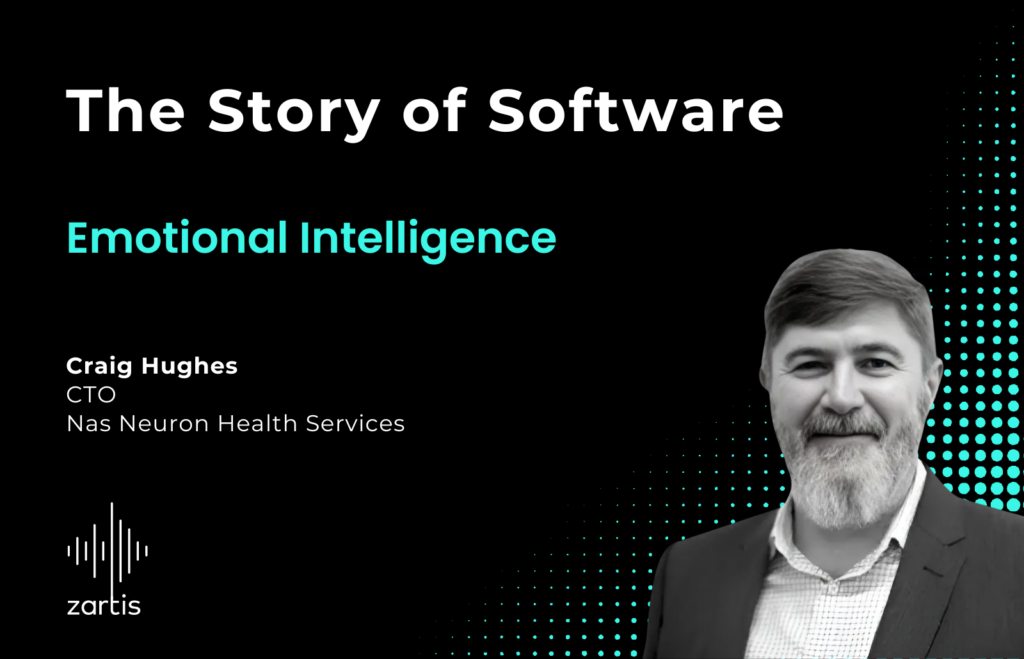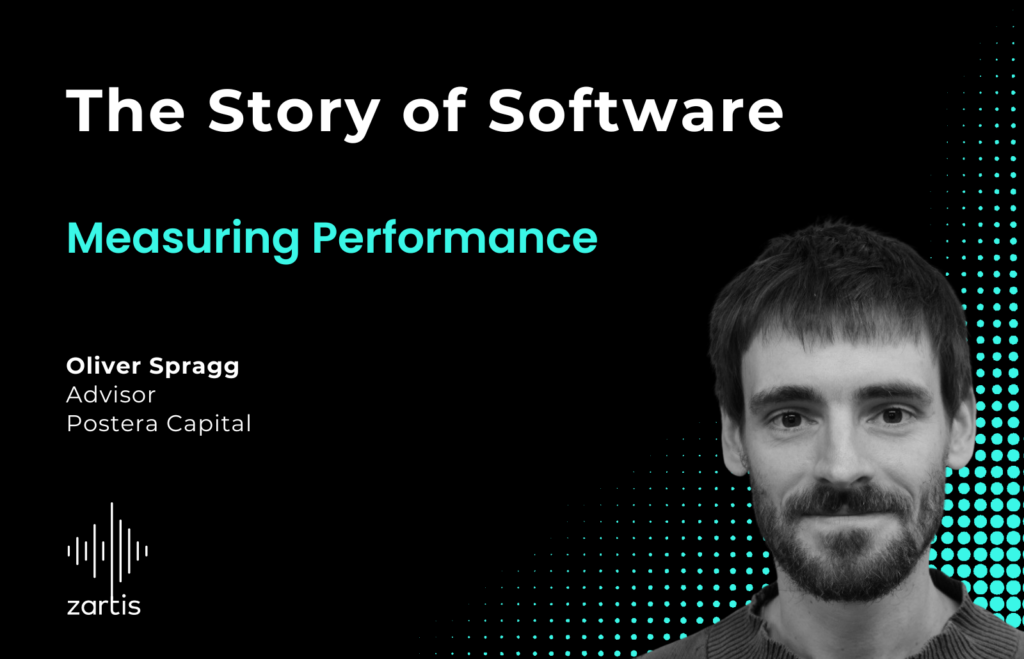Padraig Coffey, CEO at Zartis and podcast host, is joined by Colm O’Donaill, CTO at ESW, to discuss the latest technology and business trends in the e-commerce fulfillment sector.
International E-commerce Fulfillment
The Guest – Colm O’Donaill, CTO at ESW
Colm O’Donaill has been at the forefront of technology leadership for over 20 years. He has worked for O2, Citi, Ding and is currently the CTO at ESW. Colm has led the company from less than 10 employees to now over 500, along with winning the Deloitte Fast50 3 times and achieving a unicorn status.
Why and How International Fulfillment is Rising
The e-commerce fulfillment space has been one of the lucky domains that has seen a substantial and global rise in demand in the past couple of years, a trend that was accelerated by the Covid pandemic and the digitization of retail. In this episode, we explore how this sector has evolved and the technology that has enabled its growth.
Some of the topics covered include:
- How has the e-commerce fulfillment spaced evolved over the last number of years
- The impact of Covid on the fulfillment space – the opportunities and challenges
- The impact of Brexit in the European e-commerce fulfillment market
- Sustainability trends in the fulfillment and e-commerce space
- The technological opportunities and what’s next in the fulfillment industry
Episode Highlight
Episode Transcript (abridged version):
[…]
Colm, could you tell us a little bit about ESW and your role in its evolution?
I joined ESW in 2014, and the company was four years old at that point. We just passed over a decade last year, and it was difficult to celebrate in COVID times. In the seven years I’ve been there, we’ve grown from being a very small company that was already growing a good bit to now being obviously a very large company. I think we’ve got over 500 employees in the last six months, and we continue to grow. So really, I suppose the role that I played in that is, I joined as CTO providing support to a small company with a huge amount of potential. We’d already had some work done for Victoria’s Secret and we managed to capitalize on that and build an e-commerce platform for them. Like most startup companies, from a technology side, you’re always looking for more investment from the business in order to improve the platform and to add on new features for your customers. And we were very much a sales driven company which is actually great because the first customers that any company has really gives a drive to the company, and our first customers were Victoria’s Secret and Nike. You can imagine having two of those customers on your platform at the beginning, they have always demanded the absolute best from us, and that really pushed us into a situation where we were a small, scrappy Irish-based company that was trying to please and align to what a large US multinational enterprise required. We learned so much and so much of that learning is built into our platform, which we’re able to share with other customers. We’ve had that drive and philosophy behind us from the beginning.
[…]
Colm how would you describe or conceive of the major changes around e-commerce fulfillment over the last number of years?
It’s been huge really. When I joined there were very vague requirements, and very limited options for people who are going international. Typically what people did was, they had to build a distribution center in the country of the market that they were going for and build a commerce solution for that country and handle everything end to end, including all the complexities. That means you took on a huge amount of risk, because you had to have an inventory pile in that country. That’s not incredibly efficient. If those particular product lines don’t sell in that market, it is very difficult to start moving them out from that market into another, in order to resell them. There’s a lot of financial implications, settlement processes and taxation processes that actually are barriers for doing that. What we’ve seen over the last few years is that companies have become enabled to have one inventory pool and really use that one single inventory to go into multiple markets. That’s something that didn’t really exist six or seven years ago. The efficiencies that this brought to organizations has been huge. That’s on the retail side. On the shopper side, obviously, mobile payments are a huge deal that’s constantly growing. Europe is incredibly far behind from what we see in Asia and in Africa on mobile payments, where that’s the norm. Europe is fastly growing but it’s still well behind on mobile payments adoption. What we’ll see over the next few years, I think, is that the fastest growing market for mobile payments will be in Europe, but that’s not a trend we’ve seen in the past.
Are you observing a lot of pressure towards topics like sustainability? I know a lot of larger organizations are under pressure from shareholders, and how is that filtering through to the world of e-commerce?
Sustainability is one of those topics which, again, maybe 10 years ago, people weren’t all that concerned about within e-commerce. Now, it is absolutely becoming the forefront. I was presenting last week in London on some of the results of our survey, and the questions at the end had to do not much with the survey or the presentation – they were to do with sustainability. How do companies like eShopWorld and our customers actually have a sustainable strategy for fulfillment? And so at eShop we’re working on a strategy for those, and it really begins with the outbound shipments. How do we measure the carbon footprint of that shipment? So, on our checkouts now, our retailers have the option to put a carbon offset on us. They’re able to choose shipping methods that are carbon neutral or a carbon offset. These might be slower shipping methods, or you might have options that you’re able to do an offset payment, or pick out some type of corporation. Those are like very straightforward obvious ones, but less obvious are efficiencies within the supply chain. Making sure that you have the right parcel sizes for the items that you’re shipping, and that’s a logistics operation in itself. There was a project we did for one of our major customers years ago, where we used to repack 60% or 70% of their goods into smaller packaging. So they would deliver for a domestic market in these large packages, which we realized were incredibly inefficient especially for international markets. Not only were they driving up the charges, but they were driving up the environmental costs as well. So, a repackaging project like that can really reduce the impact of those packages. The last piece on sustainability is the returns. If we consider the international direct consumer market; we take a package, and we ship it from one place in the world to another place in the world, and then if a customer decides to return it, the old way of doing this was shipping it all the way back to the distribution center of the retailer. That’s an incredibly inefficient process, and it’s an incredibly environmentally unfriendly process. So, there’s a lot of work that’s going on at the moment to work out strategies for how we can reintroduce that returned product into the market it’s previously sold in, so that it doesn’t have to go all the way back. I think governments and regulators have a role to play in this, where the only option that they used to give was destruction. You can destroy a product within the country and that would release the taxes and the costs, but that’s not usually efficient. Your only two options are destruction or return. So, the new way of looking at it is how do we reinject that product back into the economy to create a circular economy around returns. That’s a bit of a piece that started in the last couple of years, and I think has huge potential in the next few years. Returns in this space are really going to grow, and it is going to be a concern not just for the retailers, but for shoppers as well.
Could you tell us a little bit about what the impact of COVID has been on the fulfillment side of e-commerce? I think we’re all aware that e-commerce has gained a huge amount of traction during the last 18-20 months. What has that meant on the fulfillment side?
Yeah, so obviously like us, our employees, our partners, our customers and everyone was affected by COVID as well, and there was a huge amount of uncertainty back in March 2020, when we really understood the impact it had. The distribution centers of our partners were closing down because of concerns of COVID and what the health impacts were going to be, and it was really unclear how this would all end up. Fortunately, e-commerce in general has been one of the industries that really economically benefited from COVID. Obviously it’s had a huge impact on our employees and partners but what really happened is that we’ve accelerated, by a number of years, the adoption of online sales. There’s people who would probably have never bought online, who were encouraged, or in fact, almost forced to purchase online. In that survey that was presented last week, we found out that 52% of an older generation who would probably never buy online, bought online during COVID, and that’s just a huge market that opened up. We could see it in our figures where by May 2020 we were seeing our peak volumes – that’s our Christmas volume for 2019. We were seeing it during the summer in 2020, and we’ve been growing ever since then. That’s had a huge impact on our ability to, as you said, become that unicorn company.
[…]
Can we talk about how maybe the technology or your way of working had to adapt or evolve during this time?
So obviously, from working with you Padraig, you know that a lot of our people who work for us in the technology side are already remote or were remote in advance. So, we have workers as far as Kiev, Spain, Portugal, and South America. Really, what’s happened is that, that’s accelerated. Obviously, all the systems were in place in order to support us, and now we just had a question of scale – how do we move from having 100 People working remotely to having 500 people working remotely? Our technical operations team had a real stormer on that end. It was also a huge advantage right from the beginning, we’ve been adopting a cloud first strategy, so we have almost no machines in our office itself. Everything is cloud based, and that really allowed us to pivot and lean into remote working.
Because everyone’s working remotely, today we have a slightly different problem, which is coming back to the office. So, we were maybe 200 to 300 people when COVID started and we’re 500 to 600 people now. We haven’t got a larger office space, so what that really means is that remote working is here forever. It’s now part of how we’re going to work, and the push that we got during COVID is basically now a permanent push. I think the challenge that we’re now going to face on the return is hybrid remote work. What do you do in a meeting, when 50% of the people are on the phone, and 50% of the people are in the office? How do you engage those people on the phone and make sure that their voices are heard in meetings and collaborative events? I think that’s something that we haven’t solved yet. We’ve already, in the last couple of weeks, had to really engage with it. So I think that’s going to be an interesting challenge. Ask me that question again in six months.
[…]
You mentioned earlier Colm that you were in London quite recently – do you foresee a significant impact on e-commerce fulfillment post Brexit?
I think Brexit had an uncertainty effect on logistics. As part of that survey that was presented last week, we asked a lot of our shoppers and a lot of other e-commerce shoppers that aren’t in our network if they would continue to buy from the UK after Brexit. Before Brexit, they were quite confident that they would continue buying from the UK, regardless of the delays, and that is a huge point towards the strength of UK brands. In the UK, the luxury brands coming out of there are especially very appealing to people in Europe. And people who want to buy those luxury brands are willing to put up with a certain amount of logistics disruption or a certain amount of extra costs. We ran the survey again after Brexit, and you can see in the numbers there, despite the uncertainty beforehand, they continued to buy from there anyway. So, knowing that there was very little impact of Brexit really on the market, as long as the charges were very clear, and the lead times of when the delivery was as clear as could be, then people would still buy from there. We saw a dip of 12% from the respondents in that survey, some people actually complained about it and said that they wouldn’t buy from the UK due to Brexit, and that’s a much lower number than I think we were expecting.
Would you be able to speak a little bit about what are the causes of the disruptions we’re seeing right now, and how this might play out in the months ahead.
I think there’s going to be a reasonably challenging time, and not just in the international market, but right here in Ireland as well. There’s a couple of different trends, and that’s going to impact the price and availability of goods. There is definitely a shortfall in supply capacity in certain markets, and that supply capacity is going to drive up the cost of shipping goods. And coupled with post-COVID inflation as well, there’s going to be a sharp increase in some of those prices. So, what we’ve seen with our retailers is, to avoid the worst of the logistics and other logistical concerns, they’re going to start running peak promotions earlier in the year. This is a trend that we actually saw starting a couple of years ago, even before COVID, where in order to reduce pressure on the logistics supply chains, retailers started watering down their Black Friday promotions. You know, pre-peak promotion starting on the 11th of November or earlier, and now even into October. They’re trying to encourage shoppers to buy for Christmas as early as possible to reduce the pressure on their own distribution centers, and on their logistics networks, and that trend has just been elevated by COVID. So, I suppose the upshot of all that is over planning for Christmas; the retailers are sending very clear message that they feel that we should reduce pressure on the supply chain, and we should listen to them as consumers and say, if we want their services, we should act on that pre-plan, and start buying it early as possible to reduce that pressure.
[..]
You can find The Story of Software podcast on:
Apple Podcasts, Spotify, Stitcher, Deezer, & any other podcast platform of your choice.
We hope you enjoy listening to this tech podcast and feel free to share any feedback with us: podcast@zartis.com







